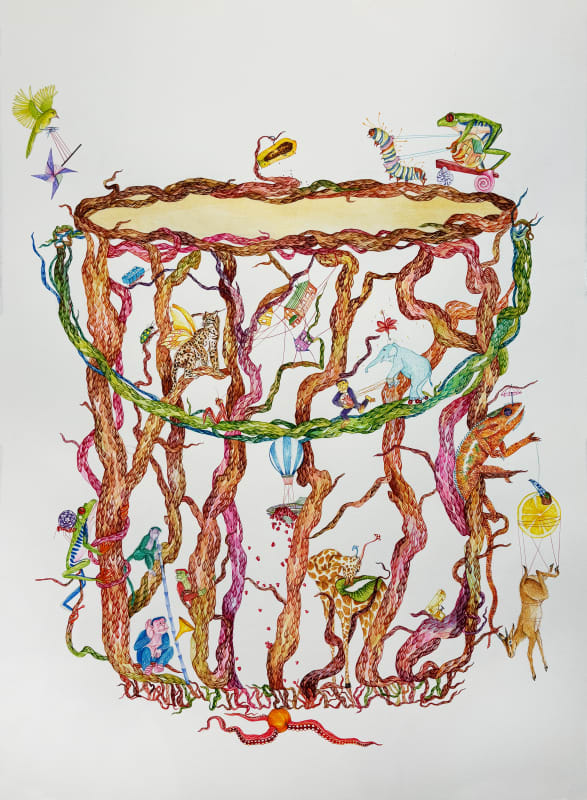A nostalgic wonderland, Yashika Sugandh's "Vartaman" delves into the profound interplay between humanity and nature, capturing the essence of the present moment with a childlike imagination that seamlessly blends the two realms. Her work poignantly reflects a deep remorse for humanity's encroachment on nature's domain, urging us to reintegrate nature into our lives as we have increasingly taken over its space.
There are some artists whose work you look at and understand with your eyes. Then there are those whose works you feel in your chest before you even try to make sense of it. Yashika Sugandh belongs entirely to the latter. Her work is driven not by spectacle but by observation. Not by declarations, but by listening. And the world she listens to is often the world we forget to hear.
Her years of rigorous training reveals itself in her soft but precise linework, her economy of gesture, and her meditative repetition. However, what sets her apart is not that she can paint this well, rather it’s that she uses that precision in service of intimacy, not display. For Sugandh, symbolism is birthed through her delicate observation of things – living and inanimate. Her works collapse the boundary between drawn and lived worlds.
Her surfaces are not inert, rather they act as visual diaries. She often paints plants growing from trumpets, birds growing out of snail shells, deer growing fruit. This recurring visual strategy unearths a deeper philosophy; what if life refuses to be contained? What if curiosity and wonder, and not design - is the principle through which anything can be a host for life?
In her world, chairs sprout flowers, suggesting perhaps that they miss the trees they once were. A trumpet curls with vines, as if reclaiming the breath it once channelled. Inanimate objects from our childhood become a site of green emergence, reminding us that life is everywhere. This is a form of reclamation.
Vartaman (“the present”), extends this philosophy. Made with touch sensors and interactive sound, it uses sensory responses to create emotional recall. Elements move in response to touch, echoing her belief in the sensory archive of memory and the idea that our hands remember what our minds might forget. Here, time is not a linear force. It is a spiral. A rhythm. A softness. Each movement in her work is a ritual gesture, one that is felt.
Time is everywhere in Sugandh’s practice: not as chronology, but as presence. Whether through kinetic movement, the growth of a wasp’s nest, or the aging of found objects, her artworks are slow conversations with time. And perhaps that is her greatest gift - she teaches the viewer how to wait.
In a world that often demands speed, and asks us to look away, her work invites us to notice, to slow down, to soften, to stay a little longer, not out of resistance, but out of reverence.

